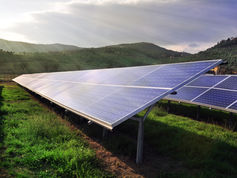Another Setback for Green Hydrogen in UAE
- Fares Arafat

- Mar 13
- 3 min read
Updated: Mar 18
Originally written on October 31, 2024. Originally Published March 13, 2025
It's fair to say that this year has been nothing short of a challenge for hydrogen enthusiasts. In July, the European Court of Auditors, the EU's independent external auditor, criticized the European Commission's hydrogen targets as being overly ambitious about the 10 million tonnes of both production and import of renewable hydrogen by 2030. A month later, Danish renewable energy producer Orsted announced it is no longer moving forward with its FlagshipOne hydrogen project, which aimed at producing 55,000 metric tons per annum of e-methanol from green hydrogen, in what would have been a key milestone for decarbonizing the shipping industry.
This series of setbacks continued this week as Bloomberg reported on Monday that Masdar, Abu Dhabi's leading renewables energy company, has pushed back its initial target of 1 million tonnes of green hydrogen production from 2030 to "within the next decade." Whilst the news came amid a backdrop of Masdar and Emsteel's green steel inauguration project, which uses green hydrogen to extract iron from iron ore, they declined to specify hydrogen production volume. This poses the following questions: What is driving the hesitancy around hydrogen development? Perhaps more concerning is that the fuel's future is at risk.
Globally, hydrogen consumption is around 100 million tonnes, predominantly produced using fossil fuels— emitting around 920 million tonnes of CO₂ annually. Whilst the potential for decarbonization via hydrogen exists in various sectors, Micheal Liebreich, founder of BloombergNEF, believes that hydrogen's contemporary use cases in refineries and fertilizers alongside shipping and steel, where green alternatives lack, is where the fuel's decarbonization impact lies most.1 This focus aligns with the UAE's National Hydrogen Strategy, which anticipates that steel and shipping will dominate demand with 28% and 23%, respectively, of the nation's 2.1 million tonnes per annum demand by 2031. Fertilizers, aviation, aluminum, and refineries look to make up the rest. Yet, despite the optimism surrounding these targets, the gap between anticipated demand and actual market uptake has hampered project development worldwide[MOU1].
Since 2021, global funding for hydrogen projects has quadrupled, reaching $362.5 billion. Driven by initiatives like the U.S. Inflation Reduction Act (IRA), the EU's Hydrogen Strategy, and the GCC's ambitions to lead the hydrogen race, developers aim to capitalize on these opportunities. In fact, globally announced green hydrogen production capacity now stands at 188 million tonnes per year, sufficient to meet today's gray hydrogen demand.
But, whilst the supply side of the equation seems promising, demand uptake remains a challenge. BloombergNEF highlights that out of the announced production capacity aiming to come online by 2030, only 1% binds the off-taker, roughly 1 million tonnes per year. Moreover, perhaps paradoxically, the share of binding agreements is less in industries where gray hydrogen is used today. This is due to the fact that much of today's gray hydrogen is produced on-site by the same companies that consume it, making the shift to an external green hydrogen infrastructure costly and logistically complex, as the EFI Foundation showcased[MOU2]. Without a strong sense of demand, suppliers remain hesitant to push forward with production projects; the case in point is Orsted, where the company highlighted the "slower than expected" growth of the offtake market as the main reason for scrapping FlagshipOne.
Furthermore, Aurora's research suggests that to incentivize industrial users to adopt green hydrogen, government subsidies of up to €7/kg may be necessary to support the switch, far from the €2/kg price that gray hydrogen hovers around. Saeed Ghumran Al Remeithi, CEO of Emsteel Group, with green steel, acknowledged this premium during his recent interview with Bloomberg.
Despite these challenges, there is still room for optimism. As developers learn from setbacks and projects like Emsteel's Green Steel Initiative and Saudi Arabia's NEOM Green Hydrogen Project, the industry may gain the insights needed to overcome barriers. Additionally, the EU's Carbon Border Adjustment Mechanism—a carbon 'border tax' aimed at levying fees on imports based on their carbon footprint—set to take effect in 2026, could propel demand for greener alternatives both within Europe and globally. However, this is contingent on reducing the free allowances many industrial players currently receive, which enable them to emit CO₂ freely whilst simultaneously undercutting the carbon price.
Regulatory support is key here; hydrogen tax credits, proposed two years ago by the IRA, remain stalled, undermining investor confidence and risking the financial viability of many hydrogen production projects. Without swift regulatory action, the momentum for green hydrogen could very well lose steam.














Comments